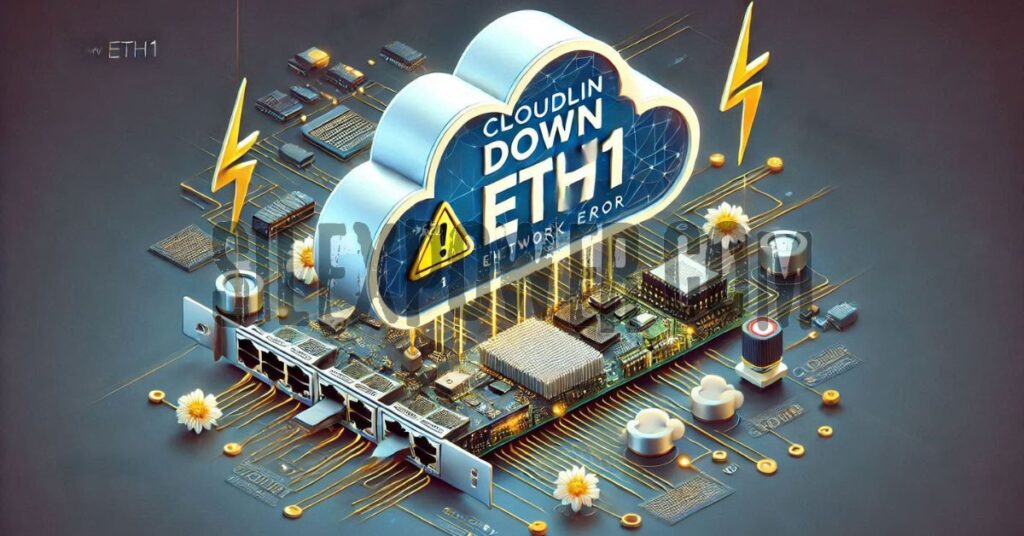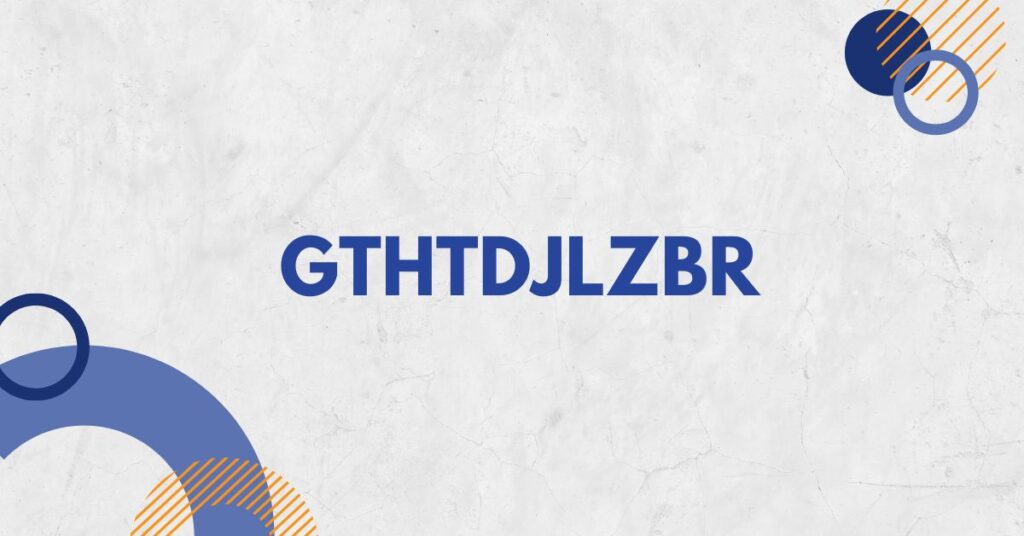Introduction
Network infrastructure and cloud services are the foundation of contemporary corporate operations in today’s digital environment. Businesses run the risk of incurring expensive downtime, data loss, and subpar service performance in the absence of a robust network. One frequent problem that might seriously disrupt operations is the Cloudlin Down ETH1 error. Data transmission is disrupted and network problems result when the ETH1 interface, which is the second Ethernet interface on a Linux-based server or network device, goes offline. A thorough analysis of the Cloudlin Down ETH1 error is given in this article, along with a detailed look at its causes, solutions, and precautions. Understanding this problem is essential for preserving a reliable and effective cloud infrastructure, regardless of whether you are an IT specialist or a cloud service provider.
What is the Cloudlin Down ETH1?
A Linux-based server or network device’s secondary Ethernet interface failing is known as the Cloudlin Down ETH1 error. The second network interface, ETH1, is crucial to cloud settings because it makes sure network traffic moves safely and smoothly. It is usually set up to offer load balancing or redundancy, so that in the event of an interface failure, the other can take over without any problems. The network is disturbed when ETH1 goes down, which causes serious problems like:
• Slow data transmission
• Service interruptions
• Possible data loss
• Reduced functionality of the program
Knowing ETH1’s significance and the reasons it’s utilized in cloud environments makes it easier to see how its failure could cause significant disruptions. Physical hardware problems, network configuration errors, driver conflicts, or network congestion are typically linked to the fault; all of these are covered in this article.
Why Does the ETH1 Interface Matter?
In a typical cloud network, the ETH1 interface has several functions that all work together to provide dependable connectivity and system redundancy. Let’s examine some of the primary arguments for why ETH1 is essential to preserving the reliability of cloud services and why its failure has such a big effect.
- Redundancy: The principal interface, ETH0, is backed up by ETH1 in the majority of cloud setups. In the event that ETH0 has problems, this enables the system to keep a continuous network connection. The failover strategy is compromised if ETH1 goes down, increasing the cloud infrastructure’s susceptibility to outages and network failures.
- Load Balancing: Many network interfaces use ETH1 for load balancing. Cloud services often need a lot of bandwidth, and ETH1 makes sure the network doesn’t get overloaded by distributing the traffic burden. Because to congestion on ETH0, the network may encounter bottlenecks and sluggish response times when ETH1 goes down.
- Improved Performance: When both ETH0 and ETH1 interfaces are up and running, they cooperate to increase network throughput. Communication can go more smoothly and quickly thanks to ETH1’s assistance in managing the data distribution between servers and clients. When ETH1 fails, the system is forced to use the primary network interface exclusively, which slows down performance.
As a result of its function in load balancing, redundancy, and performance optimization, ETH1 is an essential component of every cloud network. It is imperative to handle the Cloudlin Down ETH1 problem since an ETH1 failure has a substantial effect on the system’s overall performance and dependability.
Causes of the Cloudlin Down ETH1 Error
Effective troubleshooting and resolution of the Cloudlin Down ETH1 error depend on knowing its underlying causes. Numerous reasons, from software misconfigurations to physical hardware faults, might cause ETH1 to fail. Let’s take a closer look at each of the typical causes.
1. Hardware Failures
The Cloudlin Down ETH1 error is frequently caused by hardware-related problems. Physical elements are necessary for network interfaces, such as ETH1, to create connectivity. ETH1 will drop when these parts fail. Typical reasons involving hardware include:
- Damaged Ethernet Cables or Connectors: Ethernet cables may fray, connectors may loosen, or pins may break with time, leading to a subpar connection or outright failure. These kinds of issues are frequently discovered by a straightforward physical examination.
- Faulty Network Interface Cards (NIC): A network outage could result from a malfunctioning NIC that is in charge of managing the ETH1 interface. To restore functioning, it could be essential to replace the NIC.
- Overheating Hardware: The internal parts of servers, particularly network interfaces like ETH1, can be harmed by excessive heat. System instability brought on by overheating may result in interface failures.
- Power Supply Issues: Network interfaces, including ETH1, may potentially be impacted by an inadequate or erratic power source. Connection problems could result from hardware not getting the power it needs to operate.
Network Misconfigurations
The Cloudlin Down ETH1 issue can also be caused by network configuration errors. ETH1 can malfunction due to a number of setup issues. Common configuration errors that can result in ETH1 being down include:
- IP Address Conflicts: Communication breaks out if ETH1 and another device on the network are given the same IP address. As a result, the interface crashes or becomes inaccessible.
- Incorrect Subnet Mask or Gateway Settings: The device will be unable to communicate with other network devices, so taking ETH1 offline, if its network configuration differs from the rest of the network (for example, by using an incorrect subnet mask or gateway settings).
- VLAN Configuration Errors: Cloud environments frequently employ virtual LANs (VLANs) to divide network traffic. Incorrect VLAN configuration for ETH1 may hinder interface connectivity and result in ETH1 failure.
Software and Driver Issues
The ETH1 interface may become unstable or fail due to an out-of-date or incompatible network driver. The following are some of the primary software-related causes:
- Outdated Network Drivers: The interface may malfunction if the driver for the NIC that controls ETH1 is out of date since it might not completely support contemporary network capabilities or protocols.
- Corrupted Network Stack: The network interface may not work properly due to a damaged network stack in the operating system, which would cause ETH1 to go down. Restoring normal functionality usually necessitates reinstalling or resetting the networking stack.
Network Congestion or Overload
Because large data transfers are common in cloud systems, network congestion is a major concern. The ETH1 interface may get overloaded with traffic, leading to failure. This usually occurs in situations where:
- Bandwidth Overload: Network outages could result from the interface’s inability to manage the load if too much data is being delivered over ETH1 without enough bandwidth or load balancing.
- Lack of Load Balancing: Traffic constraints on ETH1 could cause cloud networks that don’t use load balancing to fail.
Firmware and BIOS Issues
The BIOS, often known as the system firmware, is essential for controlling hardware resources, such as network interfaces. The firmware may have errors or problems that cause ETH1 to become unstable or crash. Additionally, outdated BIOS versions may result in network failures due to incompatibilities with more recent network cards or drivers.
How to Troubleshoot the Cloudlin Down ETH1 Error
We now know the possible reasons behind the Cloudlin Down ETH1 error, so let’s move on to troubleshooting techniques that will assist find and resolve the problem.
1. Check Physical Connections and Hardware
Always make sure the physical connection is safe before beginning more sophisticated diagnostics:
- Make sure there is no obvious damage to the Ethernet cable.
- Make that the Network Interface Card (NIC) is installed correctly and isn’t broken by looking at it.
- Make that the network device is receiving enough power from a steady power source.
If everything looks good physically, move on to more advanced diagnostic steps.
Use Networking Commands to Check Interface Status
The status of ETH1 can be checked in Linux environments using programs like ifconfig or ip link. These instructions will show if ETH1 is up or down. To see ETH1’s current state:
Bash ifconfig eth1
With this command, ETH1’s current status will be displayed. You can restore ETH1 if it’s down by using:
Bash [ifconfig eth1]
sudo ifconfig eth1 up
Review System Logs for Errors
Clues regarding the ETH1 failure are frequently found in Linux logs. Check for error messages pertaining to ETH1 using the dmesg command:
Bash [dmesg | grep eth1]
dmesg | grep eth1
Keep an eye out for errors or alerts about defective hardware, driver problems, or incorrect network configurations. These logs can help you pinpoint the problem’s precise cause.
Inspect Network Configuration Files
The ETH1 issue may be the result of incorrectly configured network configuration. Verify the network configuration files to make sure the ETH1 values are accurate:
- Debian/Ubuntu: /etc/network/interfaces
- RedHat/CentOS: /etc/sysconfig/network-scripts/ifcfg-eth1
Look for any difficulties with the gateway, improper IP assignments, or contradictory settings. After fixing any errors, restart the network interface.
Update Drivers and Operating System
Make that the operating system and network drivers are current. To update the drivers and system, do the following commands:
- Update the system packages:
bash
Copy code
sudo apt-get update && sudo apt-get upgrade # For Debian/Ubuntu-based systems
sudo yum update # For RedHat/CentOS-based systems
Update the network drivers to the latest version provided by the NIC manufacturer.
Preventive Measures to Avoid Cloudlin Down ETH1 Errors
Now that you know how to fix the Cloudlin Down ETH1 error, let’s look at some ways to keep your cloud network stable and stop this problem from happening at the future.
1. Regular Monitoring
Use network monitoring software such as Prometheus, Zabbix, or Nagios to keep an eye on the state of all network interfaces, including ETH1. By using these technologies, possible problems can be identified early and proactive measures can be taken before a failure happens.
2. Implement Load Balancing
Ascertain that load balancing is appropriately set up across several interfaces to avoid network overload. This will lessen the likelihood that any one interface will fail because of congestion by distributing traffic equally between ETH0 and ETH1.
3. Perform Routine Hardware Maintenance
To keep hardware parts like switches, NICs, and cables in excellent operating order, do routine maintenance and inspections. Downtime can be decreased by replacing worn-out parts before they fail.
4. Configure Backup Interfaces
If ETH1 fails, make sure that failover methods or backup interfaces are set up correctly so that traffic can be instantly redirected to another interface. Redundancy and constant service availability are therefore guaranteed.
Conclusion
A serious problem that has the potential to interfere with network infrastructure and cloud-based services is the Cloudlin Down ETH1 error. IT managers may reduce the likelihood of downtime and preserve a robust network by comprehending its origins, putting efficient troubleshooting techniques into practice, and taking preventative measures. Maintaining the stability, dependability, and high performance of your cloud infrastructure requires regular hardware maintenance, appropriate configuration, and monitoring.
The dangers connected with the ETH1 failure can be reduced, and your cloud services can continue to be reliable, effective, and unbroken, by adhering to the comprehensive procedures and precautions described in this article.



